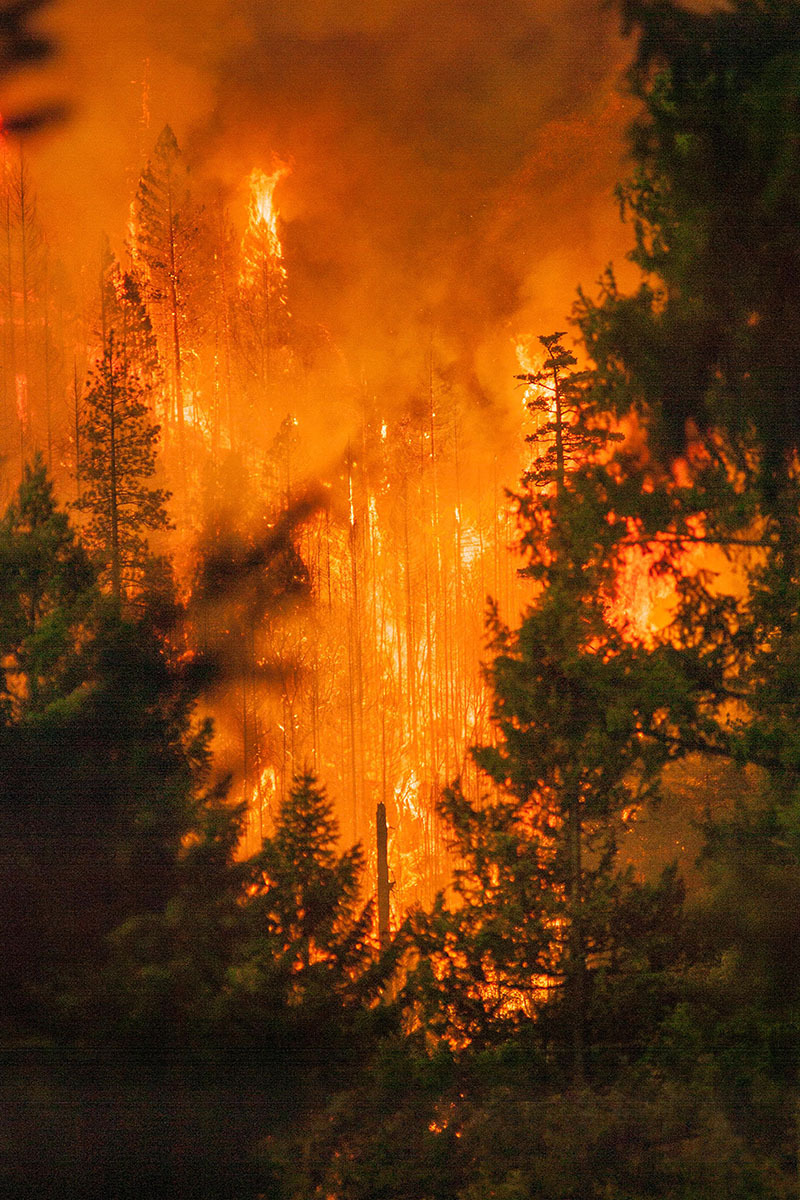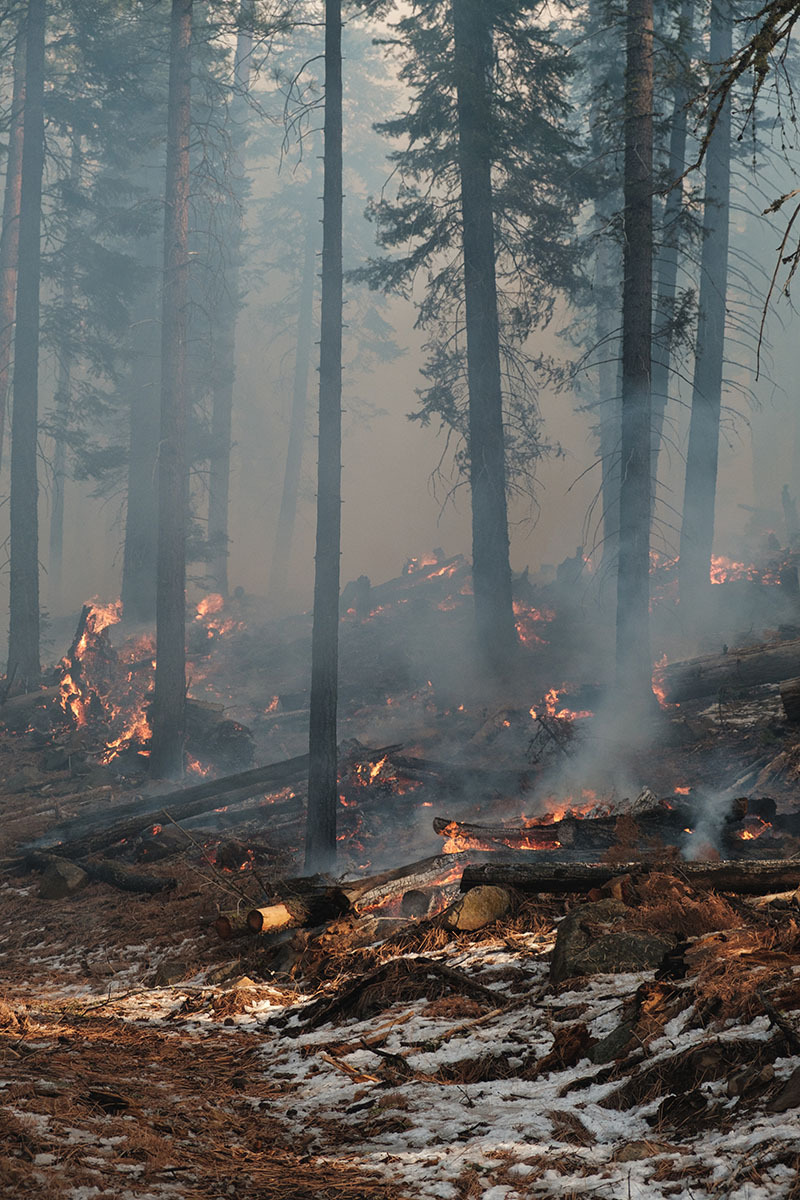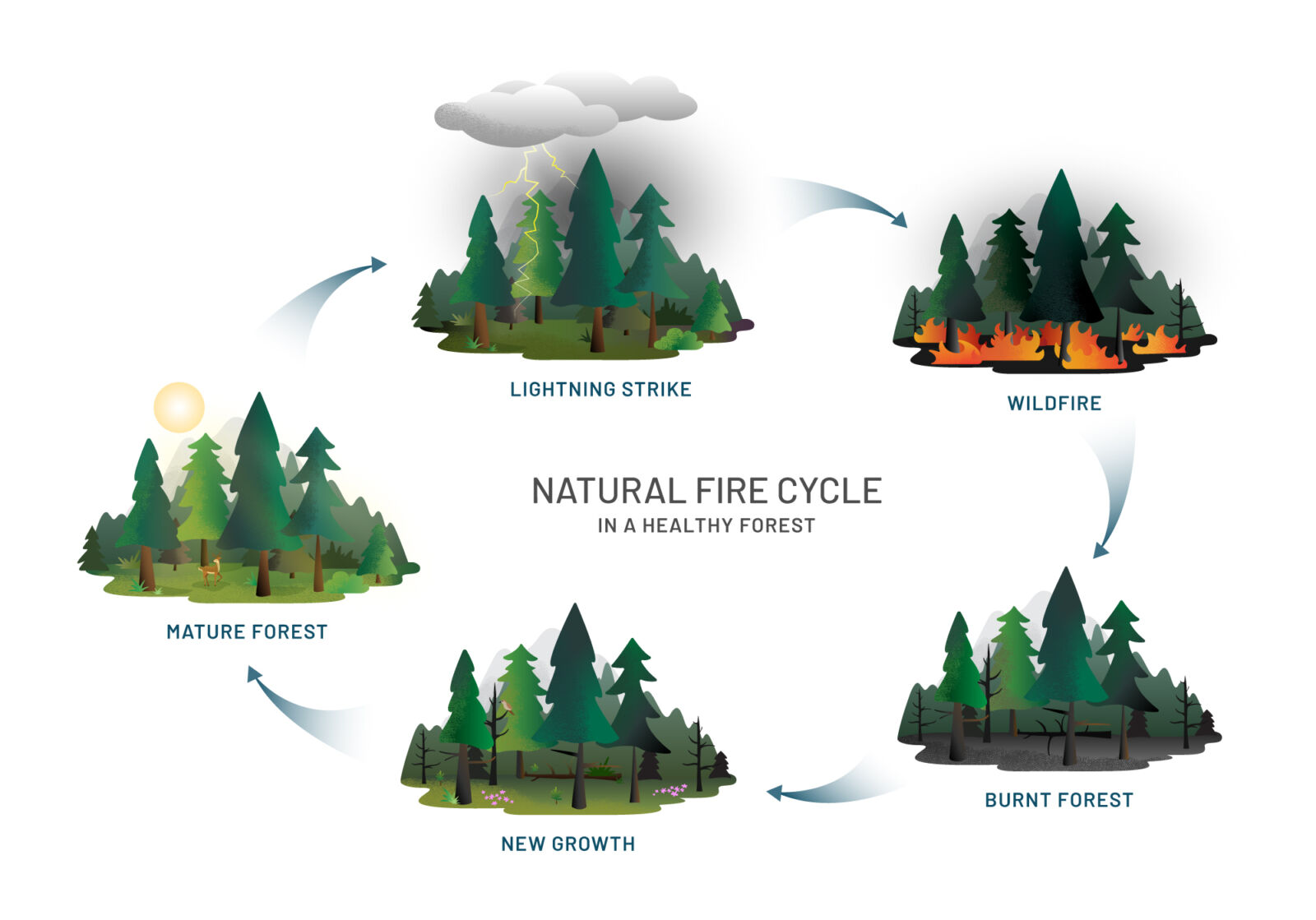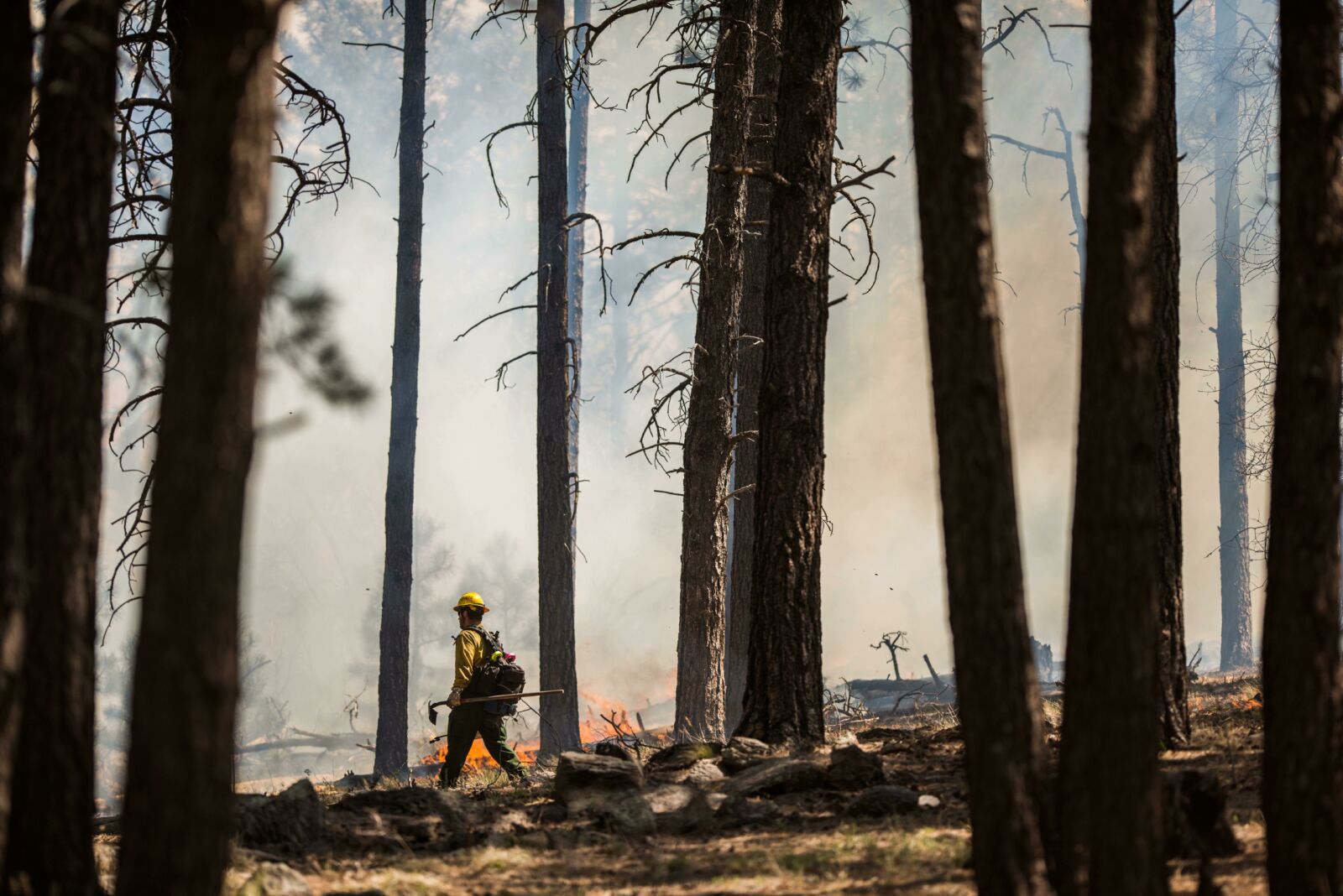It may seem counterintuitive that burning forests is good for their health. In fact, until the end of the 20th century, many conservationists believed all types of fire were harmful to forest health, leading to decades of intense fire suppression. But as ecologists and foresters have gained a better understanding of the important role fire plays in maintaining forest ecosystems, prescribed fires have become more common.

Photo by U.S. Forest Service.
High-Severity Wildfire
High-severity wildfires leap into the forest canopy and burn hot enough to destroy whole forest ecosystems.

Photo by Dan Alvey.
Low to Moderate-Intensity Wildfire
Low to moderate-intensity fires stay close to the ground, reducing understory density without destroying larger trees and their canopies.
Fire is a Natural Part of Many Landscapes
Fire has always been part of the natural landscape, and many forests have adapted to and need fire to remain healthy. While high-severity wildfires pose extreme risk to forest ecosystems, low to moderate-intensity fires can play a key role in keeping those same ecosystems healthy by reducing understory density and returning nutrients to the soil.
Low to moderate-intensity fires benefit forest health by...
- Reducing forest density. Trees that grow too close together compete for resources, making them more susceptible to disease, insect infestations, drought, and severe wildfires. Low to moderate-intensity fire helps reduce density by removing the weakest trees, returns nutrients to the soil, and makes the remaining trees more resilient.
- Improving wildlife habitat. Fire creates diverse wildlife habitats by opening the forest canopy and creating opportunities for new vegetation to grow. Fire also creates snags, or dead trees, that are important to many endangered bird and bat species. These varied forest structures provide new opportunities for foraging and shelter that are key to a healthy ecosystem.
- Increasing biodiversity. Low to moderate-intensity fire reduces competition from invasive species and encourages the growth of fire-adapted native vegetation, making forests more resilient against severe wildfires.
- Lessening the severity of wildfires. Low to moderate-intensity fire reduces the risk of severe wildfires by reducing the number of fuels in the forest such as leaf litter, pine needles, and shrubs. This protects larger trees from high-severity stand replacing blazes that can be catastrophic to forest ecosystems.

Reintroducing Fire Through Prescribed Burns
Before European arrival, indigenous people managed their lands with fire as an important cultural and stewardship practice, and continue to do so today. Unfortunately, the benefits of many of these stewardship practices were lost through colonization and strict fire suppression policies, resulting in more overgrown, less resilient forests.
As forester managers have gained a better understanding of the important role fire plays in maintaining forest ecosystems, they have increasingly looked to prescribed fire to improve forest health and guard against severe wildfires.

Photo by Michael McNamara.
Worker carrying out a prescribed fire on an NFF project site in the Upper Beaver Creek area of the Coconino National Forest.
Prescribed fire is the controlled application of fire by a team of experts to restore the health of a forest or grassland ecosystem. Every prescribed fire has a burn plan that outlines ideal temperature, humidity, and wind conditions for the burn to be executed safely. These prescribed fires replicate the effects of a low to moderate-intensity wildfire in a controlled area to reach the best results for the forest and the surrounding community.
Learn more about how prescribed burns are planned and executed.
Cover photo by Dan Alvey.

